#Stew Peas
Text

Oct. 5, 2022
Stew peas is a dish for gathering, and a dish for celebrating, and a dish for living. But it’s also a dish for slowing down; stew peas call for a certain gentleness, and a certain trust, alongside an implicit agreement allowing time to meld your beans and your meat and your aromatics.
The meal’s origins are Jamaican; in “Caribbean Cooking,” John DeMers even refers to stew peas as the country’s national dish. Red peas, as kidney beans are known in Jamaica, are cooked down and mellowed with coconut milk, then stewed with beef, pork or even vegetarian alternatives. The meal is further flavored with garlic and herbs. While stew peas can be found in home kitchens throughout the Caribbean diaspora, Jamaican renditions almost always include spinners: flour dumplings that make the stew into a full-fledged meal. And this stew is as individual as the hands of the cook preparing it — there are few “wrong” ways to cook stew peas.
The recipe’s base ingredients couldn’t be humbler: dried kidney beans, a bowl of salted pig’s tail, garlic, scallions and a can of coconut milk. But the component binding everything together is time: Much of the work in stew peas resides in what you aren’t doing. You can check in on the simmering pot as spinners form between your palms, rolling and adding each dumpling while the stew reaches the precipice of its flavor. And you’ll know it’s done when the stew’s aroma envelops your kitchen (to say nothing of your neighbor’s, should they be so lucky). Then the only thing you could possibly do is take it off the stove to partake.
Stew peas is less an orchestra than a gauzy jam band playing well after last call.
In the absence of pig’s tail, you could use whatever pork you’ve got on hand. Or you can swap out that protein entirely for beef. Once, in a bind and miles away from the nearest Caribbean grocer, I cooked the dish with the Chinese sausage in the back of a boyfriend’s fridge and genuinely couldn’t have been more pleased with the result. And in the cookbook “Original Flava,” the chefs Craig and Shaun McAnuff remove meat entirely, noting that “there’s so much flavor already that meat doesn’t have to be the star attraction.” Each memory of enjoying the dish created a recipe in itself, entirely honest to the moment in which I partook of it.
Sign up for The New York Times Magazine Newsletter The best of The New York Times Magazine delivered to your inbox every week, including exclusive feature stories, photography, columns and more.
As it did for any number of recipes, our most recent pandemic rewired my sense of the dish. Stew peas had been window dressing for me — familiar, omnipresent, delicious. But as the months passed, this dish’s necessary gentleness became less of a habit or a memory than a remedy — one of the primary compulsions for me to actually cook something. And I’d experienced that with several dishes, like the velvety richness of nikujaga and thit kho; or the elation of chewing ropa vieja after a full day of anticipation. But stew peas had already woven their way into the background of my life: cooked on a lazy Sunday alongside a partner, or munched as leftovers, or shared among friends far too late in the evening, balancing a bowl on my knee beneath a table of beer. The dish laid a foundation for me to really feel every meal that followed it. And, for me at least, this motion — of slowness, of a meal that’s taking form as the day unfolds — became just as much a feeling as a flavor. Another way of feeling the time pass. The sort of ingredient whose absence, when taken for granted, immediately becomes distinct: So it’s no surprise that when I’m away from my place, stew peas is what I’m looking to conjure. And when friends visit, it’s one of the things I most want to share with them.
As Suzanne Barr notes in “My Ackee Tree,” “building flavor is the key to developing any delicious dish.” Stew peas is a chance to allow life to carry you alongside it, less an orchestra than a gauzy jam band playing well after last call. After you’ve combined the peas and the meat, you could start your laundry. For more than two hours, the pot simmers until the peas have softened, bubbling their own low chatter while you fiddle with podcasts or text friends from the sofa. Eventually, you roll the spinners in your hands, adding them to the dish, setting your rice on another pan. And then the dish is done.
Cooking is labor. It’s work. What if one route was looking for gentleness and slowness on this front, toward ourselves and others? Cooking this dish fortified that patience for me, allowing it to settle into my daily revolutions along with all of its ingredients.
Then again, taste can be clumsy. Feeling is easier. A few months back, ambling around Provincetown after a too-late evening, I wandered out one morning on a mission for friends, searching for brunch ingredients with a tote bag full of pot and jam. At a park bench beside a market, a woman who worked there leaned over a bowl of stew peas. I’d seen her in town earlier that week. And this dish couldn’t have been on the menu. But she relished it, and she glanced my way, allowing me to relish it, too — and we shared the moment for another few seconds before we both moved on.
#Jamaican Stew Peas Are a Good Excuse to Slow Down#Stew Peas#Jamaican Food#Jamaican Stew Peas#Healthy Slow Cooker Recipes#One Pot Meals#Caribbean Cooking
2 notes
·
View notes
Text
Watch "Jamaican style stew peas | recipe" on YouTube
youtube
1 note
·
View note
Photo

Guinness beef stew
#stew#beef stew#mashed potatoes#beef#food#irish stew#guinness#potatoes#peas#comfort food#dinner#meal#st patricks day#cabbage#foodporn#delicious#cooking#food photography#foodgasm#recipe
4K notes
·
View notes
Text
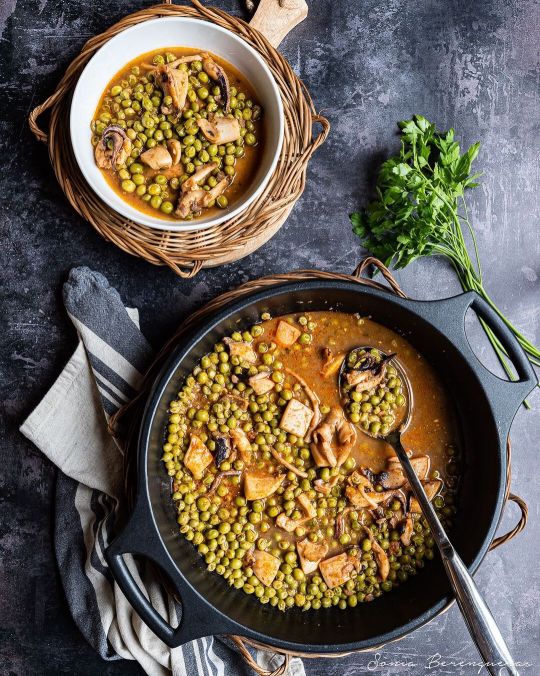
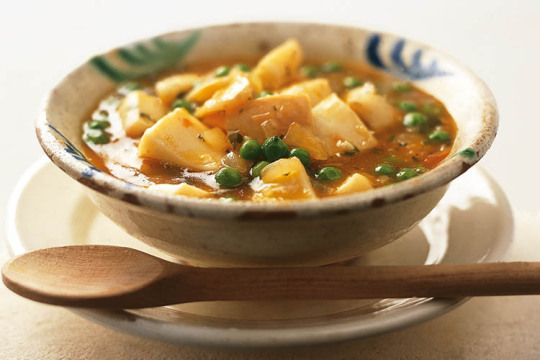
Sípia amb pèsols (cuttlefish with peas). It can be made with or without potatoes.
It's a traditional dish from from the Empordà area of Catalonia and from Menorca (Balearic Islands), and one of those dishes that will definitely make you want to dip bread in its sauce.
Photos: Pa amb vi i sucre and Descobreix Menorca.
#sípia amb pèsols#menjar#food#fish#cuttlefish#pea#peas#foodie#stew#food photography#savory#delicious#world food#mediterranean food#mediterranean cuisine#cuisine#mediterranean diet#empordà#menorca#catalunya#illes balears
91 notes
·
View notes
Text

#stewed pork#rice and peas#mac and cheese#macaroni cheese#caribbean food#steamed broccoli#corn on the cob#foodie#food porn#munchies#jamaican food#jamaican
181 notes
·
View notes
Text

Aginares à la Polita
#food#recipe#dinner#stew#aginares a la polita#artichoke#onions#carrots#peas#tomatoes#lemon#dill#potatoes#vegetarian#vegan#greek
46 notes
·
View notes
Text
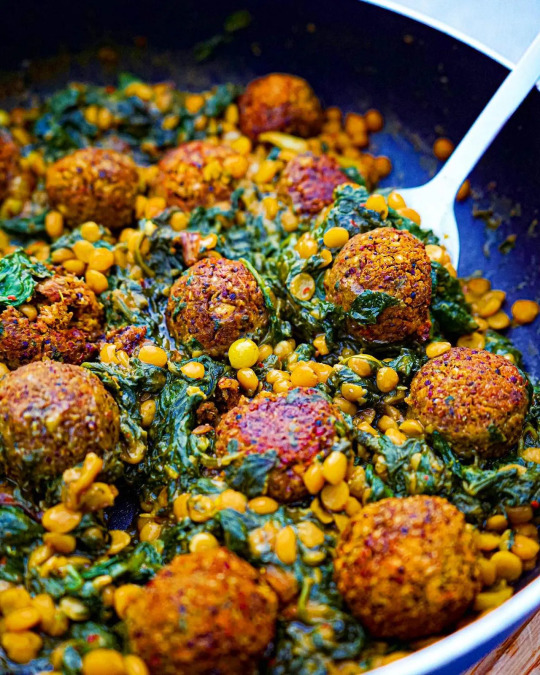
Vegan Khoresht Saag (Persian Spinach, Split Pea, and Meatball Stew)
#vegan#lunch#dinner#Persian cuisine#iranian cuisine#middle eastern cuisine#west asian cuisine#stews#spinach#split peas#vegan meatballs#quinoa#beans#oats#garlic#onion#turmeric#tarragon#cinnamon#coriander#sumac#miso#lime#olive oil#black pepper#sea salt#💚
39 notes
·
View notes
Text

Got the newest vax shot today, and in anticipation of it knocking me on my butt I am making a lovely pot of stew.
#food#beef stew#with lots of added veggies and such#potatoes herbs tri color carrots mushrooms garlic pearl onions and peas#i haven't had stew in forever#and I'm already crashing a bit from this shot so I'm glad I thought of this#working from home tomorrow thankfully
45 notes
·
View notes
Text
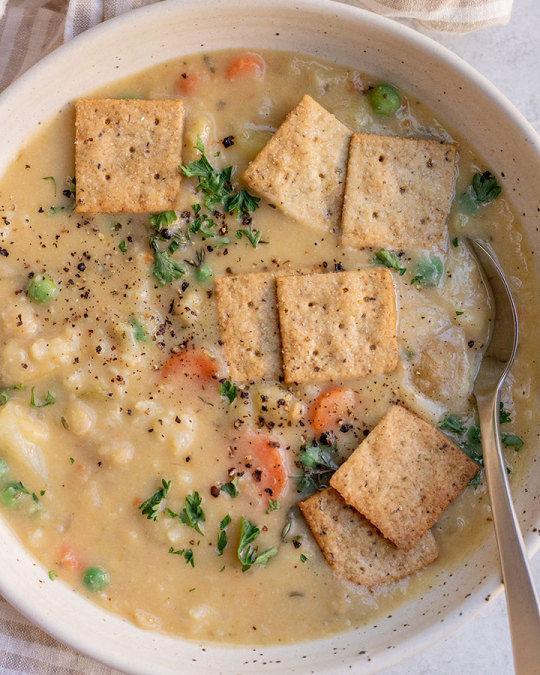
Creamy Vegan Pot Pie Soup
#soup#stew#winter#lunch#savoury#food#recipe#recipes#carrot#carrots#peas#pot pie soup#celery#garlic#sage#cauliflower#white beans#chickpeas#plantbasedrdblog
77 notes
·
View notes
Text
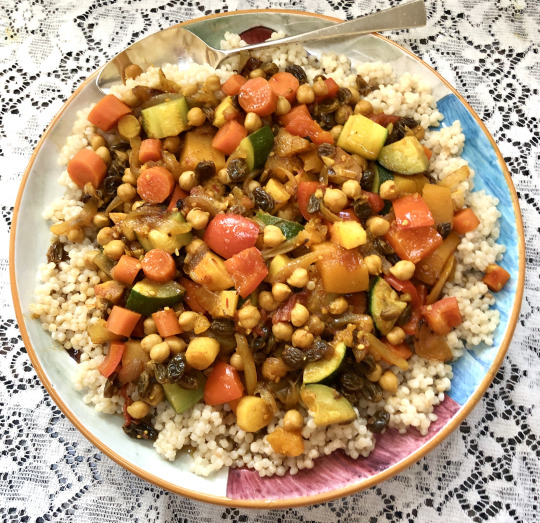
Israeli Couscous with Seven Vegetables
Follow me on Instagram @RonnieVFein
It isn’t my Ashkenazi family tradition, but among North African Jews, and particularly Moroccan Jews, there’s a fabulous dish served on Rosh Hashanah: Couscous with Seven Vegetables.
I’ve cooked versions of this dish several times mostly because it sounded so delicious and also because I am always on the lookout for a good, festive and filling vegetarian entree.
This one satisfies in every way possible.
This is the recipe we like best: I used Israeli couscous rather than the traditional tiny grains of Moroccan couscous because my family likes it better. Also, I used Harissa paste (because I always have some) but you can substitute red pepper flakes or a pinch or two of cayenne pepper (or leave it out if you don’t want any pepper). My husband said he would like more raisins. Up to you…..
ISRAELI COUSCOUS WITH SEVEN VEGETABLES
2 tablespoons olive oil
1 large onion (preferably a sweet variety such as Vidalia), sliced
1 teaspoon finely chopped fresh ginger
1 clove garlic, finely chopped
4 carrots, peeled and cut into 1/2-inch slices
2 medium tomatoes, cut into chunks
1 parsnip, peeled and cut in 1/2-inch slices
1 cup cut up bite sized butternut squash
1/2 teaspoon harissa paste
1/2 teaspoon ground turmeric
1/2 teaspoon ground cinnamon
2-1/2 cups vegetable stock
1/2 large red bell pepper, cut into bite sized chunks
1 small zucchini, cut into bite sized chunks
1 cup raisins
1 cup canned chickpeas, rinsed and drained
Salt to taste
1-1/2 cups Israeli couscous
Heat the olive oil in saucepan over medium heat. Add the onion and cook, stirring often, for about 5-6 minutes or until softened and beginning to brown. Add the ginger and garlic and cook for 1-2 minutes. Add the carrots, tomatoes, parsnip and squash and stir the ingredients. Stir in the harissa, turmeric and cinnamon. Add the stock, bring to a boil, reduce the heat to medium low and cook for about 15 minutes. Add the bell pepper, zucchini, raisins and chickpeas. Cook for about 10 minutes more, or until vegetables are tender. Add salt to taste. Cook the couscous according to the manufacturer’s directions. Spoon the couscous on large serving platter. Spoon the vegetables and pan fluids over the couscous.
Makes 4 dinner servings, 8 side dish ervings
#israeli couscous with 7 vegetables#couscous with vegetables#chick peas#rosh hashanah#rosh hashanah 2023#Israeli couscous#vegetarian entree#North African food#Moroccan food#Jewish holidays#vegetable stew
17 notes
·
View notes
Text
The horrible terrible experience of one of your favourite foods making your stomach hurt. God hates me because I love split pea soup. I hate god because what kind of being would punish someone for eating split pea soup. It’s like what I think kids in cartoon kindergarten think glue tastes like.
#soups and stews#souplovers#good soup#split pea soup#god hates me#god please#please let me eat my soup
3 notes
·
View notes
Text

4 notes
·
View notes
Text
I’ve been in such a depressive mood lately. I guess it was just surprise that my more positive streak had lasted so long.
3 notes
·
View notes
Text

Scottish steak pie
#steak pie#beef#dinner#gravy#food#meal#main dishes#beef stew#puff pastry#mashed potatoes#peas#comfort food#uk food#tasty#foodporn#delicious#cooking#food photography#foodgasm#recipe
601 notes
·
View notes
Text
there ain't nothing wrong with stovetop rice and microwave-steamed vegetables. stovetop rice and microwave-steamed vegetables have gotten me through many a hard time in my life. i must admit sometimes i've even been so fancy as to sautée the veg and the rice together with some soy sauce or teriyaki at the end. and i'm not ashamed of that.
#adam talks too much#meals that are really actual MEALS that take less than 30 minutes are the most important thing in the world#like i love a good stew i love my alfredo recipe i love beans and peas and pies#but sometimes i just need food that doesn't require stirring and i need it immediately
2 notes
·
View notes
